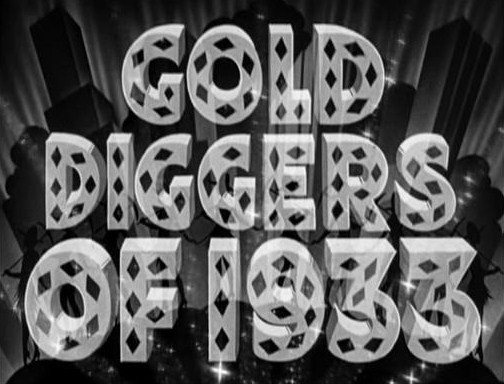 If you've ever wondered why so many romance heroines are (wrongly) identified as "gold-diggers," Stephen Sharot's "Wealth and/or Love: Class and Gender in the Cross-Class Romance Films of the Great Depression" may provide the answer:
If you've ever wondered why so many romance heroines are (wrongly) identified as "gold-diggers," Stephen Sharot's "Wealth and/or Love: Class and Gender in the Cross-Class Romance Films of the Great Depression" may provide the answer:
the sexually empowered woman who manipulates men, who came to be known from about 1915 as a “gold digger,” appears frequently in the films of the early 1930s. The adoption of the term “gold digger,” which had replaced “vamp” as the most prominent type of femme fatale, was part of a broader shift in popular conceptions of women who had moved away from their families and lived alone or with other women. As the term indicates, the motivation of the gold digger is material benefit, whereas the motives of the vamp are often elusive and impenetrable: the vamp may simply take pleasure from the entrapment and destruction of men. Another difference between the vamp and the gold digger is that whereas the class origins of the vamp are unknown, ambiguous, or irrelevant, those of the gold digger are almost always lower or working class. (92-93)
There seem to be a number of points of connection between the films studied by Sharot and many modern popular romances. For one thing, a very high proportion of the former end in the same manner as the latter: "the romances in most cross-class films are successful: sixty-five films (76 percent) of the 1929–39 sample and 98 films (83 percent) of the 1915–28 sample" (92). For another, they seem to be aimed at a similar demographic: "during the 1930s the studios assumed that their audience was a predominantly female one, and the female-centered cross-class romance was clearly oriented toward that audience" (91).
Both can claim Samuel Richardson's Pamela as an ancestor:
Cross-class romances in popular culture, most of which are between wealthy men and poor women, can be found in what are regarded as the first modern novels, which included what were to become the major female types from the lower class: the virtuous heroine (Pamela or Virtue Rewarded, 1740) and the amoral social climber (Moll Flanders, 1722; Shamela, 1741). Films with the theme of cross-class romance, most with virtuous heroines, have been made throughout almost the entire history of the cinema [...] but the number of such films in recent years cannot compare with the 1920s and 1930s, when, on average, at least one cross-class romance film would appear every month. From the beginnings of the feature film around 1915 until 1938, cross-class romance films were far more numerous than they would be thereafter. (89)
Furthermore, in his abstract Sharot writes that "Gender distinctions are reinforced by narratives in which the wealthy male is redeemed by the poor female so that he can perform the appropriate male gender roles. When the female is wealthy, the poor male insists on her economic dependence on him." This is a pattern which, I think, can also be found in romance novels. In more recent times there has perhaps been an even higher proportion of wealthy heroes paired with poor heroines but I have come across rich heroines in earlier decades who are paired up with either a poor hero who then becomes rich or one who insists on the heroine accepting a living standard in line with his finances. In these latter cases the hero is usually not actually poor, just not rich. Again, this is a nuance present in the films analysed by Sharot:
in a number of the cross-class romance films with rich females their relationship is not with working-class men but with middle-class men, often reporters, and in these, mainly screwball comedies, the romance is almost inevitably successful. Where the male is wealthy, the female is almost invariably from the working or lower class in occupation, such as maid, salesgirl, stenographer, or chorus girl. (92)
Substitute a secretary, housekeeper, cleaner or nanny for the "maid, salesgirl, stenographer, or chorus girl" and you could be describing a lot of modern popular romances.
Sharot's speculations about the responses of the audiences of these films may also be of interest to scholars of popular romance novels:
The common solution, in which the poor protagonist is rewarded for her or his disinterested love by a successful union with the wealthy protagonist, might be termed “escapist,” but it was probably recognized and accepted by many in the audience as conforming to the rules of what had become a familiar formula. However, this particular “escape” may have been especially pleasurable to particular audiences (urban, female, with aspirations to mobility) because it was grounded in a reality of class and gender inequality, which, given the limited opportunities for women in the labor market, made the social mobility of women dependent on marriage. [...] Audiences [...] were unlikely to feel dejected by a comparison with their own situation because they had learnt to experience the formula as an entertainment without continually comparing it with their own experience. (105)
-----
Sharot, Stephen. "Wealth and/or Love: Class and Gender in the Cross-Class Romance Films of the Great Depression." Journal of American Studies 47.1 (2013): 89-108.
The image came from Wikimedia Commons and is in the public domain. It is a title frame from the trailer for Gold Diggers of 1933.
